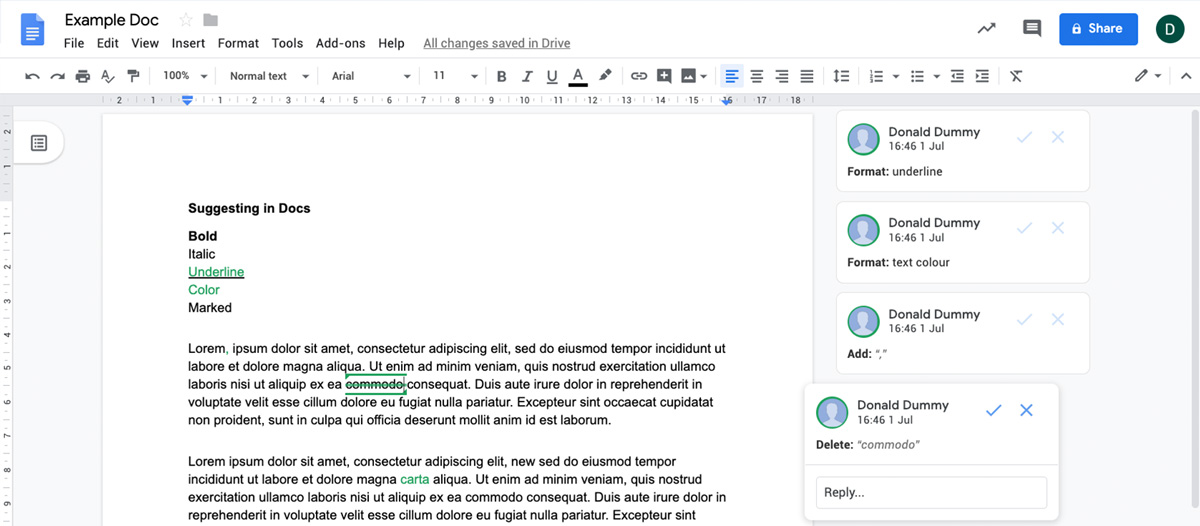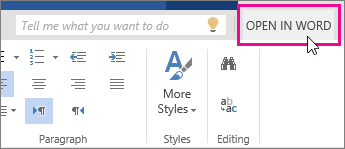
- EDIT IN WORD ONLINE LOCATION HOW TO
- EDIT IN WORD ONLINE LOCATION UPDATE
- EDIT IN WORD ONLINE LOCATION SERIES
Then the user templates location will be opened.įor more detailed information about Open User Template Folder of Kutools for Word, please visit: Open User Template Folder description. Please click Kutools > More > Open User Templates Locations. Kutools for Word, a handy add-in, includes groups of tools to ease your work and enhance your ability of processing word document. After you have installed Kutools for Word, you can open user template location with just one click. Open user template location with Kutools for WordĪctually there is a very easy and convenient way to open the user template location.You don't need to apply the tedious operation as above showing. In the file type dropdown list, select All Files. Step 4: Click File > Open, then paste the user template file location in the address bar of Open dialog box and press Enter button to open the location. The Look In drop-down list, at the top of the dialog box, contains the current path name used for templates. More advanced table features, such as custom table styles, cell size, text direction, and sort order, are only available in the Word desktop app. Word displays the Modify Location dialog. With Word for the web, you can insert a table, edit table text, and easily edit basic table structure, such as adding or deleting rows and columns. Step 3: Click the Modify button (even though you won't be modifying anything.).

If the path for the templates is short enough, you may be able to see it in the dialog box right now. In the File Types list, choose User Templates. Step 2: Click File Locations to bring up the File Locations dialog. In Word 2007, click Office Button > Word Options > Advanced. OpenDocument Text (.odt) Word for the web can’t open documents in other file formats. Word for the web can’t save documents in the. Step 1: In Word 20, click File > Options > Advanced Word for the web displays documents in these formats, but to edit the document in the browser, Word for the web saves a new copy of the document in. Normally, we open user template location manually. This "feature" is driving me nuts, and looking at this thread, it looks like it has been there for years, with nothing being done by Microsoft.There is no easy way to open template location. Well why not just have a setting to ignore the cache and grab the "server" version every time? After all, I opened it directly "from the server", so, yes, that is the file that I want! (I've tried Options > Save > Delete files from cache when closing Excel, and I have deleted the Microsoft Office Cache, but that doesn't work).
EDIT IN WORD ONLINE LOCATION HOW TO
This article describes how to make this change by using a SharePoint workflow email task.
EDIT IN WORD ONLINE LOCATION UPDATE
However, you can update the hyperlink to force Word to open the document in edit mode. This behaviour is clearly a deliberately designed FEATURE, since Excel isn't throwing an unhandled error - it knows there is a newer file "on the server" (Sharepoint Online), and shows a message asking the user to refresh. By default, when you open a Microsoft Word document from a hyperlink in an email message, Word opens the document in read-only mode. The result is that the automation becomes unreliable - which completely defeats its purpose. It makes the macro automation un-useable since it is not possible within the macro to detect that the file is some old version.

EDIT IN WORD ONLINE LOCATION SERIES
I have created an Excel macro for one of my customers which updates a series of other Excel files in Sharepoint (directly from Sharepoint NOT from a synch'd OneDrive folder) - but, apparently randomly, the Excel App sometimes chooses to open an old version of the modified file, and fails to update the actual file in Sharepoint. Follow these steps to edit: Go to File > Info. a setting in Excel/Word to ALWAYS get the latest version from Sharepoint. If you receive or open a document and can't make any changes, it might be Open for viewing only in Protected View. This is not satisfactory behaviour, and there should at least be a way to configure your way around it - e.g.



 0 kommentar(er)
0 kommentar(er)
